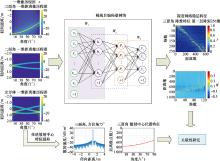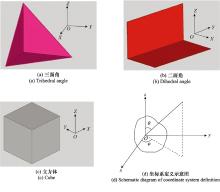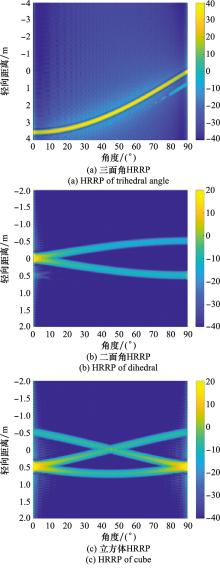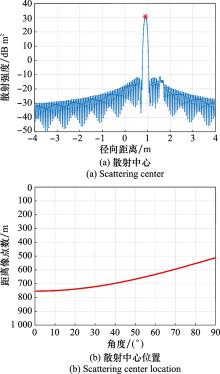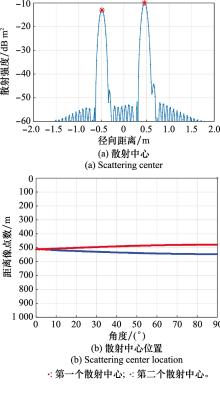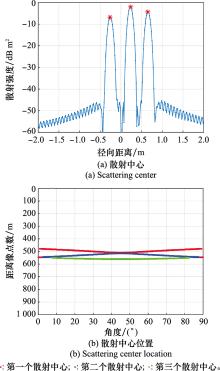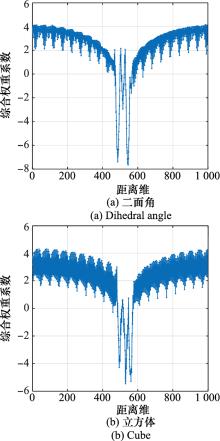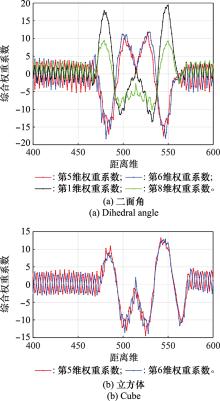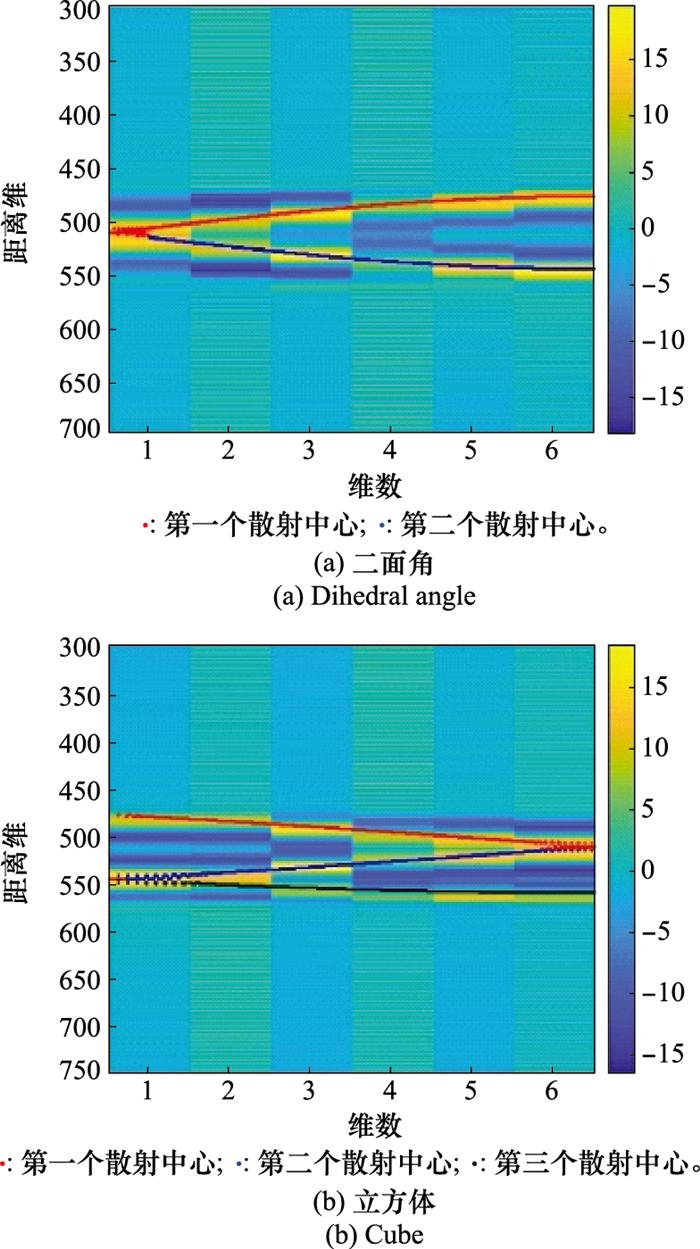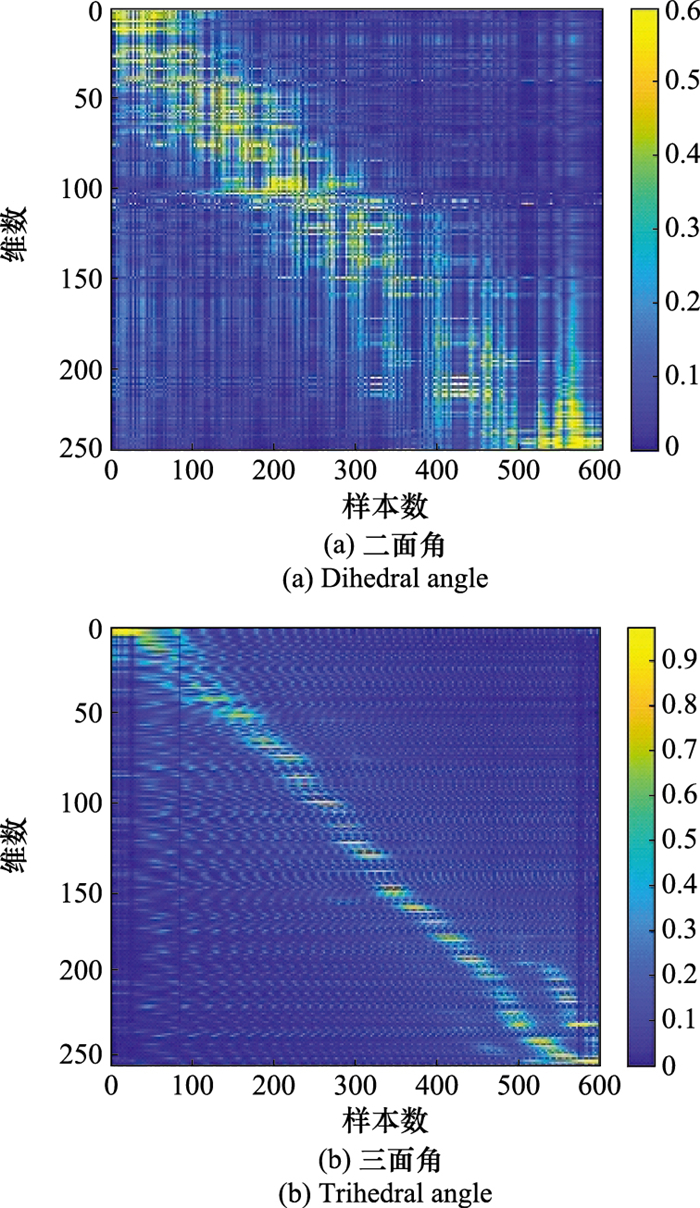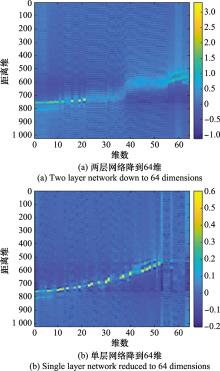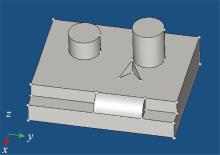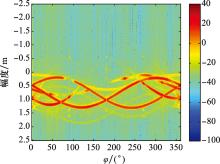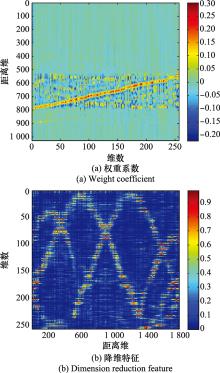Systems Engineering and Electronics ›› 2021, Vol. 43 ›› Issue (11): 3040-3053.doi: 10.12305/j.issn.1001-506X.2021.11.02
• Electronic Technology • Previous Articles Next Articles
Correlation research between deep features of HRRP sparse auto-encoder and scattering center features
Chaoying HUO*, Hua YAN, Xuejian FENG, Hongcheng YIN, Xiaoyu XING, Jinwen LU
- Science and Technology on Electromagnetic Scattering Laboratory, Beijing Institute ofEnvironmental Features, Beijing 100854, China
-
Received:2021-02-23Online:2021-11-01Published:2021-11-12 -
Contact:Chaoying HUO
CLC Number:
Cite this article
Chaoying HUO, Hua YAN, Xuejian FENG, Hongcheng YIN, Xiaoyu XING, Jinwen LU. Correlation research between deep features of HRRP sparse auto-encoder and scattering center features[J]. Systems Engineering and Electronics, 2021, 43(11): 3040-3053.
share this article
| 1 | 袁莉. 基于高分辨距离像的雷达目标识别方法研究[D]. 西安: 西安电子科技大学, 2007. |
| YUAN L. Study of radar target recognition method base on high range resolution profile[D]. Xi'an: Xidian University, 2007. | |
| 2 |
高倩, 刘家学, 吴仁彪. 基于平均模板的HRRP自动目标识别[J]. 现代雷达, 2003, 25 (3): 14- 17.
doi: 10.3969/j.issn.1004-7859.2003.03.005 |
|
GAO Q , LIU J X , WU R B . Automatic target recognition based on HRRP mean-templates[J]. Modern Radar, 2003, 25 (3): 14- 17.
doi: 10.3969/j.issn.1004-7859.2003.03.005 |
|
| 3 |
高倩, 吴仁彪. 一种基于SVM分类器的HRRP-ATR方法[J]. 现代雷达, 2004, 26 (5): 20- 23.
doi: 10.3969/j.issn.1004-7859.2004.05.006 |
|
GAO Q , LIU J X . HRRP-ATR based on SVM classifier[J]. Modern Radar, 2004, 26 (5): 20- 23.
doi: 10.3969/j.issn.1004-7859.2004.05.006 |
|
| 4 | 余责永, 刘汪渡, 谢永亮. 基于SVM的雷达目标一维距离像识别[J]. 舰船电子工程, 2009, 29 (9): 102- 104. |
| YU Z Y , LIU W D , XIE Y L . Radar target recognition using range profiles based on SVM[J]. Ship Electronic Engineering, 2009, 29 (9): 102- 104. | |
| 5 |
DU L , LIU H W , BAO Z , et al. Radar automatic target reco-gnition using complex high-resolution range profiles[J]. IET Radar Sonar Navigation, 2007, 1 (1): 18- 26.
doi: 10.1049/iet-rsn:20050119 |
| 6 |
张小英, 王宝发, 刘铁军. 基于PCA-LVQ的雷达目标一维距离像识别[J]. 系统工程与电子技术, 2005, 27 (8): 1373- 1375.
doi: 10.3321/j.issn:1001-506X.2005.08.013 |
|
ZHANG X Y , WANG B F , LIU T J . 1-D range profile recognition of radar targets using PCA-LVQ[J]. Systems Engineering and Electronics, 2005, 27 (8): 1373- 1375.
doi: 10.3321/j.issn:1001-506X.2005.08.013 |
|
| 7 | 李波, 任红梅, 肖志河. 人工智能在雷达应用中的限制和发展前景[J]. 军事文摘, 2019, 435 (3): 42- 44. |
| LI B , REN H M , XIAO Z H . Limitation and development prospect of artificial intelligence in radar application[J]. Military Digest, 2019, 435 (3): 42- 44. | |
| 8 | 徐高贵, 殷红成, 袁莉, 等. 一种基于卷积神经网络的HRRP序列空间目标识别方法[J]. 中国传媒大学学报(自然与科学版), 2019, 26 (3): 40- 44. |
| XU G G , YIN H C , YUAN L , et al. Spatial target recognition method of HRRP sequence based on convolutional neural network[J]. Journal of Communication University of China (Science and Technology), 2019, 26 (3): 40- 44. | |
| 9 | 王容川, 庄志洪, 王宏波, 等. 基于卷积神经网络的雷达目标HRRP分类识别方法[J]. 现代雷达, 2019, 41 (5): 33- 38. |
| WANG R C , ZHUANG Z H , WANG H B , et al. HRRP classification and recognition method of radar target based on convolutional neural network[J]. Modern Radar, 2019, 41 (5): 33- 38. | |
| 10 | 陆金文, 殷红成, 盛晶, 等. 基于改进的一维卷积神经网络的高分辨距离像识别方法[J]. 电光与控制, 2020, 27 (8): 19- 22. |
| LU J W , YIN H C , SHENG J , et al. High-resolution range profile recognition based on improved one-dimensional convolutional neural network[J]. Electronics Optics & Control, 2020, 27 (8): 19- 22. | |
| 11 | JARMO L, VISA K. Deep learning for HRRP-based target recognition in multistatic radar systems[C]//Proc. of the IEEE Radar Conference, 2016. |
| 12 | 冯博. 雷达高分辨距离像特征提取与识别方法研究[D]. 西安: 西安电子科技大学, 2015. |
| FENG B. Feature extraction and recognition methods for radar high range resolution profiles[D]. Xi'an: Xidian University, 2015. | |
| 13 | 冯博, 陈渤, 王鹏辉, 等. 基于稳健深层网络的雷达高分辨距离像目标特征提取算法[J]. 电子与信息学报, 2014, 36 (12): 2949- 2955. |
| FENG B , CHEN B , WANG P H , et al. Feature extraction method for radar high resolution range profile targets based on robust deep networks[J]. Journal of Electronics & Information Technology, 2014, 36 (12): 2949- 2955. | |
| 14 | 翟颖, 陈渤. 基于稳健变分自编码器模型的雷达高分辨距离像目标识别算法[J]. 电子学报, 2020, 48 (6): 1149- 1150. |
| ZHAI Y , CHEN B . Robust variational auto-encoder for radar HRRP target recognition[J]. Acta Electronica Sinica, 2020, 48 (6): 1149- 1150. | |
| 15 | 张增, 任汉付. 基于SAE-HMM模型的雷达目标高分辨率距离像识别方法[P]. 中国: CN 109871907 A, 20190611. |
| ZHANG Z, REN H F. Radar target high resolution range profile recognition method based on SAE-HMM model[P]. China: CN 109871907 A, 20190611. | |
| 16 | CHENG X Y , PENG X Y , LI J B , HUO C Y . Sparse autoencoder based manifold analyzer model of multi-angle target feature[J]. IEEE Access, 2020, 8, 153250- 153263. |
| 17 | BYRD R H , NOCEDAL J , SCHNABEL R B . Representations of quasi-Newton matrices and their use in limited memory me-thods[J]. Mathematical Programming, 1994, 63 (1/3): 129- 156. |
| 18 | 肖慧. 物理光学电磁建模方法的研究与实现[D]. 长沙: 国防科学技术大学, 2003. |
| XIAO H. Research on and implementation of electromagnetic modeling method based on physical optics[D]. Changsha: National University of Defense Technology, 2003. | |
| 19 | 崔索民, 吴振森, 方大纲. 一种计算多面体目标RCS的等效边缘电磁流公式[J]. 微波学报, 1997, 13 (1): 20- 25. |
| CUI S M , WU Z S , FANG D G . A novel formula of equivalent edge current for calculating RCS of polyhedral structure[J]. Journal of Microwaves, 1997, 13 (1): 20- 25. | |
| 20 | 殷红成, 朱国庆, 董纯柱, 等. 基于自适应射线管分裂的多次反射计算方法[J]. 系统工程与电子技术, 2013, 35 (4): 700- 706. |
| YIN H C , ZHU G Q , DONG C Z , et al. Efficient multi-reflection computational method based on adaptive ray tube splitting[J]. Systems Engineering and Electronics, 2013, (4): 700- 706. | |
| 21 | QUINQUIS A, DEMETER S, RADOIE. Enhancing the resolution of radar range profiles using a class of subspace eigenanalysis based techniques[C]//Proc. of the Digital Signal Processing, 2001: 288-303. |
| [1] | Jingming SUN, Shengkang YU, Jun SUN. Radar small sample target recognition method based on meta learning and its improvement [J]. Systems Engineering and Electronics, 2022, 44(6): 1839-1845. |
| [2] | Jingming SUN, Shengkang YU, Jun SUN. Pose sensitivity analysis of HRRP recognition based on deep learning [J]. Systems Engineering and Electronics, 2022, 44(3): 802-807. |
| [3] | Bo DAN, Zhequan FU, Shan GAO, Tao JIAN. Full-polarization high resolution range profile recognition technology for sea surface target based on convolutional neural network [J]. Systems Engineering and Electronics, 2022, 44(1): 108-116. |
| [4] | Liang ZHANG, Wei YANG, Weijie LI, Xiaoqi YANG, Yongxiang LIU. Classification of radar clutter amplitude statistical model based on complex-valued convolutional-ResNet [J]. Systems Engineering and Electronics, 2021, 43(11): 3086-3097. |
| [5] | Wang LU, Yasheng ZHANG, Can XU, Caiyong LIN. HRRP target recognition method based on bispectrum-spectrogram feature and deep convolutional neural network [J]. Systems Engineering and Electronics, 2020, 42(8): 1703-1709. |
| [6] | Qian XIANG, Xiaodan WANG, Rui LI, Jie LAI, Guoling ZHANG. HRRP image recognition of midcourse ballistic targets based on DCNN [J]. Systems Engineering and Electronics, 2020, 42(11): 2426-2433. |
| [7] | LIU Dai, ZHAO Yongbo, ZHOU Yongwei, CHEN Mingzhe, LI Wei. Maneuvering target tracking algorithm aided by a high resolution range profile [J]. Systems Engineering and Electronics, 2019, 41(9): 1967-1972. |
| [8] | WANG Caiyun, HUANG Panpan, LI Xiaofei, WANG Jianing, ZHAO Huanyue. Radar HRRP target recognition based on AEPSO-SVM algorithm [J]. Systems Engineering and Electronics, 2019, 41(9): 1984-1989. |
| [9] | HU Yangguang, XIAO Mingqing, ZHANG Kai, WANG Xiaozhu, DUAN Yaoze. Infrared aerial target tracking based on fusion of traditional feature and deep feature [J]. Systems Engineering and Electronics, 2019, 41(12): 2675-2683. |
| [10] | GUO Pengcheng, LIU Zheng, LUO Dingli. Radar HRRP clutter robust target recognition method based on double anomaly detection [J]. Systems Engineering and Electronics, 2019, 41(10): 2221-2226. |
| [11] | YU Sixuan, WANG Huawei. Risk forecasting in general aviation based on sparse de-noising auto-encoder neural network [J]. Systems Engineering and Electronics, 2019, 41(1): 112-117. |
| [12] | YUAN Jiawen, LIU Wenbo, ZHANG Gong. Application of dictionary learning algorithm in HRRP based on statistical modeling [J]. Systems Engineering and Electronics, 2018, 40(4): 762-767. |
| [13] | LI Bin, LI Hui. HRRP feature extraction based on mixtures of probabilistic principal component analysis [J]. Systems Engineering and Electronics, 2017, 39(1): 1-7. |
| [14] | WU Jia-ni, CHEN Yong-guang, FENG De-jun, WANG Xue-song. Target recognition for polarimetric HRRP based on pre-classification and model matching [J]. Systems Engineering and Electronics, 2016, 38(9): 1969-1974. |
| [15] | NING Chao, HUANG Jing, HUANG Pei-kang. Solution for characteristic parameters of precession cone-shaped #br# target using HRRP [J]. Systems Engineering and Electronics, 2014, 36(4): 650-655. |
| Viewed | ||||||
|
Full text |
|
|||||
|
Abstract |
|
|||||


